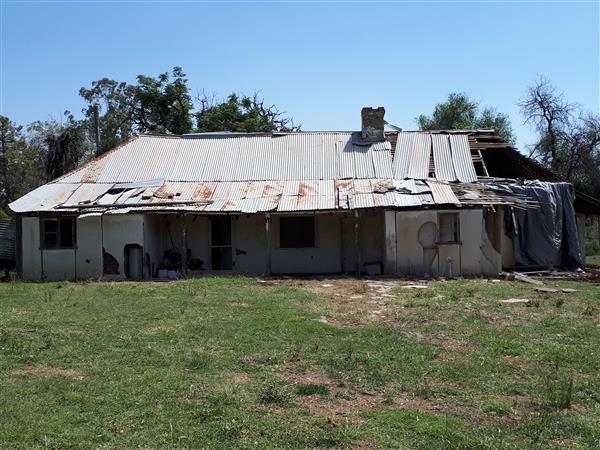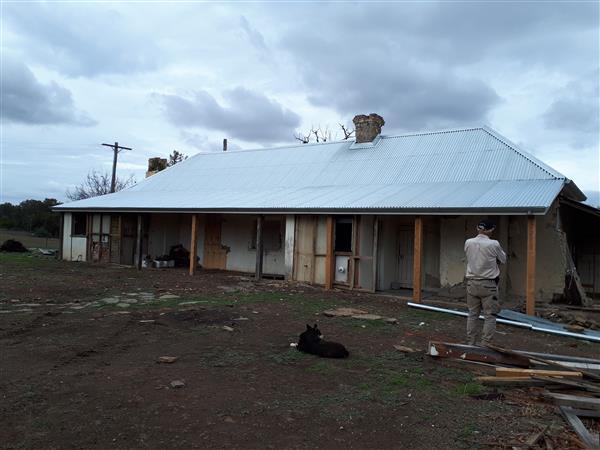CONSERVATION WORK COMPLETE FOR STATE-SIGNIFICANT HERITAGE SITE
An inn at Euchareena which was the scene of bushranger Ben Hall’s last hold up in 1865 has had significant conservation works completed, with assistance of Dubbo Regional Council (DRC), and Heritage NSW. The Nubrygyn Inn was built of mud bricks in the 1840s and has been owned by the Brazier family ever since. It has also been used to accommodate farm workers but has been vacant for many years, and following several severe storms, the roof was in serious need of repair.
DRC provided indirect assistance throughout the project, by making Council’s Heritage Advisor available to help the applicant apply for, and secure, a $40,000 grant through Heritage NSW, and then to oversee and provide specialist heritage advice for the project.
“This inn holds a lot of historical significance in the village of Euchareena, and after decades of severe weather and termite attack, it was vital that the inn got some TLC. It’s likely that the building would collapse if the roof were lost and the mud brick walls were left exposed. It’s even better that Council was able to employ an experienced Euchareena-based builder to complete the conservation work,” said Mayor of the Dubbo Region, Councillor Ben Shields.
The Nubrygyn Inn and Cemetery is of state significance for its role in the earliest frontier expansion beyond Bathurst into the Central West. It was originally a ‘halting’ place on the 1823 road for the soldiers and convicts travelling from Bathurst to the Wellington convict farm. The ‘halting place’ utilised permanent water in the adjacent Nubrygyn Creek, and to a surviving gum tree where while resting, said DRC Heritage Advisor Graham Hall.
“The Inn shows how early road networks expanded and were utilised, as well as the importance of accommodation and refreshment for travellers in remote areas. The Nubrygyn Inn is also of state significance as a rare surviving example in the Central West of an 1840s mud-brick building that retains relatively intact original fabric and features,” said Mr Hall. “The roof was originally timber shingles. These were covered with corrugated iron, probably before 1900, and some shingles remain. The recent work was to replace the corrugated iron and some decayed rafters.”
At the time the Inn was built, rivers acted as an important travel and trade route for the Wiradjuri Nation, which was bordered by the Macquarie, Lachlan and Murrumbidgee Rivers. The name Nubrygyn is derived from the Indigenous name “Lubrygee” which means “junction of two creeks.” A good description of the Inn was published in the Maitland Mercury by a correspondent travelling from Mudgee to Molong :
Arrive at Nubrygyn, a transition county, with the slaty shales and quartz leaders of the diggings, combined with the alluvial flats and low, grassy ridges of farming country… the front veranda is covered by a mass of ivy, grapevines and jasmine, the garden, besides flowers contains various and numerous fruit trees.
Council’s heritage advisor is available to provide advice on heritage matters in the area free of charge. To make a booking, visit DRC’s website.
Image caption: Before and after the roof remediation work


Last Edited: 17 Jul 2023